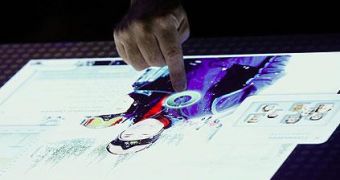Natural human – computer interaction models are becoming pervasive thanks mainly to the introduction of new form factors, but the NUIs of today are just a preview of things to come. Speaking of previews, at TechFest 2011 in Redmond this week, Microsoft Research will showcase some projects that have yet to become actual products.
The Redmond company promises more than 150 demos and 24 lectures from its R&D hotspots around the world, and users can already get a glimpse at the kind of projects which will be demonstrated through the two videos embedded at the bottom of this article.
The first features Shadow Draw, built by Microsoft Research’s Larry Zitnick, this projects leverages a natural user interface in order to identify user drawings and provide guidance by tapping an internal database of models.
Natural user interaction is also used for the second demonstration, a project designed to enable non-intrusive screening for colon cancer.
“Today this is an invasive process that scares many people away from what can be life-saving procedure as the idea of sending a tube with a camera in to your body isn’t especially appealing,” revealed Microsoft’s Steve Clayton.
“A collaboration between Microsoft, Intel, Vectorform and Massachusetts General Hospital enables much faster and less invasive colonoscopies. This had led to virtual colonoscopies (using a CT scanner) that now take about 3 minutes instead of 30+ minutes.
“Previously the process took a lot longer due to the time needed to run algorithms to “clean” the CT images. These images are then reconstructed in to a 3D view of the colon and as you can see above, these 3D views can be navigated through using a gesture based interface.”
End users can already witness the benefits of NUIs through a range of Microsoft products from Windows 7 to Office 2010, and to Kinect for Xbox 360, Windows Phone 7, Microsoft Surface, etc.
But NUIs will not be limited to just these form factors, and will become ubiquitous as next generation computers are included into all aspects of life.
The software giant spends some $9 billion per year on Research and Development building innovation.
At Microsoft, it’s Craig Mundie, Chief Research and Strategy Officer, that’s tasked to looking beyond the horizon of technology and to envision and then build the products which consumers will use decades from now.
According to the company, over 900 researchers are focused on imagining and developing breakthrough technology which will ultimately make it into everyday products.
“You peer ahead just beyond our headlights and try to figure out what's going to happen, to improve our understanding of how technology is likely to evolve and how we can apply it to our business,“ Mundie said.
“Microsoft is in a truly unique position,” he added. “We have a robust level of global research and collaboration that can make truly exciting technologies possible and bring some to bear on solving the world’s hardest problems. I’m excited to see the momentum building across the company for natural user interfaces as we rethink how we interact with computers and what they can do for us.”

 14 DAY TRIAL //
14 DAY TRIAL //